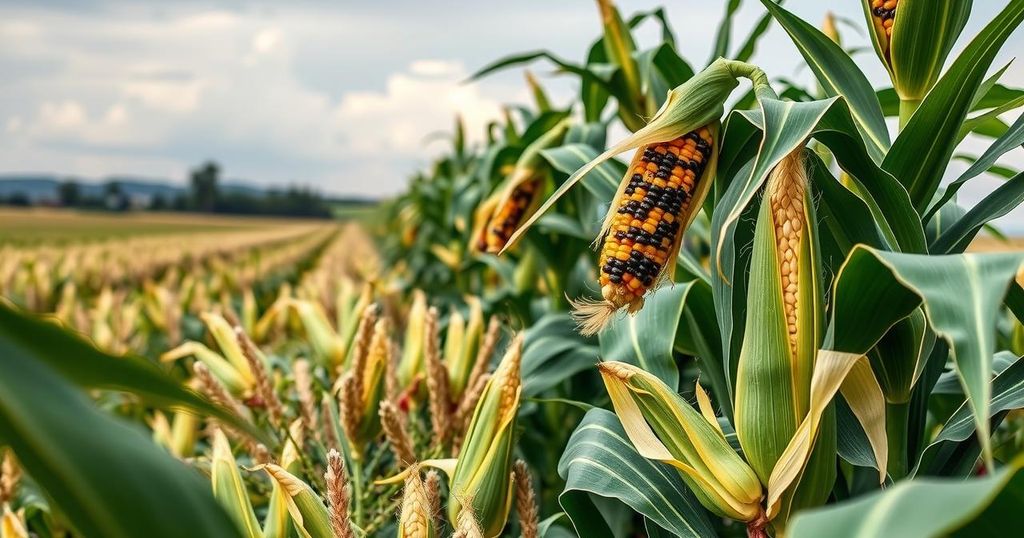Dry weather in Argentina has led to increased soybean and corn prices on the CBOT, with soybeans up 1.29% and corn up 0.78%. Kazakhstan’s grain exports have surged due to these conditions, while French farmers protest over competition issues. The situation reflects the broader impacts of climate change on global agriculture and trade dynamics.
The recent surge in soybean and corn prices on the Chicago Board of Trade (CBOT) can be attributed to adverse weather conditions in Argentina, which have raised significant concerns regarding crop yields. Soybean futures have increased by 1.29%, reaching $10.04 per bushel, while corn prices rose by 0.78%, to $4.54 per bushel. These developments are occurring despite earlier rains that provided some relief, highlighting how persistent drought conditions can severely affect agricultural outputs. Moreover, wheat futures saw a rise of 0.8% to $5.33 per bushel, driven by global supply constraints related to weather conditions. Simultaneously, Kazakhstan has capitalized on these challenges, exporting 3.7 million metric tons of newly harvested grain from September to December—an impressive 54% increase compared to the previous year. In contrast, French farmers have taken to protesting against policies they deem unfavorable amid increasing competition.
The article addresses significant changes in global agricultural commodity markets, primarily driven by climatic factors affecting crop yields in Argentina. As weather patterns grow more erratic due to climate change, the reliance on stable agricultural output becomes paramount, with countries like Kazakhstan strategically increasing their grain exports to fill supply gaps. The dynamics of international trade and agricultural policies are rapidly evolving in response to these environmental challenges, causing unrest among farmers in traditional markets such as France.
In summary, the rise in soybean and corn prices is a direct response to dry weather conditions in Argentina, raising concerns about future crop yields. The current situation underscores the growing significance of weather-related factors in agricultural markets, as countries adapt their export strategies to cope with these challenges. Furthermore, this landscape shift emphasizes the impacts of climate change on global food supply and economic policies, necessitating a reevaluation of investment and production strategies moving forward.
Original Source: finimize.com






